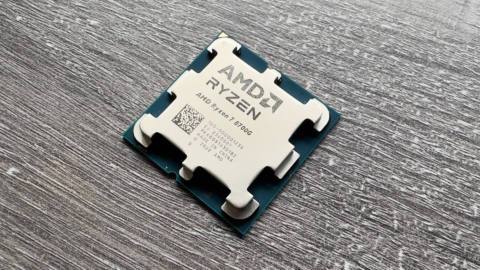Will Arrow Lake be the CPU that turns things around for Intel? We'll find out when Intel's latest desktop processor is launched sometime before the end of this year. In the meantime, the latest scuttlebutt suggests that Intel won't be doing a GPU-less version of the top-spec Core Ultra 9 variant of the new chip.
ARL-S full lineup will require more time to compile, apologies.For now, I can confirm that the 285K, 265K, and 245K monikers are official.Moreover, all Core Ultra 9 SKUs will ship with integrated graphics. So, no Core Ultra 9 F SKUs.July 7, 2024
The rumour comes from serial Arrow Lake soothsayer on X, @jaykihn0 (via PCGamesN), who claims that all Core Ultra 9 SKUs “will ship with integrated graphics.” If accurate, it's a change from Intel's policy in recent years, which has included so-called “F” variants of several processor models from across its CPU ranges with the integrated graphics disabled.
In return, Intel shaves $30 or thereabouts off the price. This approach makes most sense with higher performing chips aimed at gaming. The idea is that if you're buying a fairly pricey CPU with a view to gaming, it's a pretty much nailed-on certainty that you're going to be using a dedicated graphics card. So you don't need integrated graphics.
At the same time, fusing off the graphics makes it possible to use some chips with faults in the iGPU that would otherwise render them useless. It's win-win for everyone.
As for why Intel reportedly isn't taking this approach, at least with Core Ultra 9 models if perhaps not with other Arrow Lake SKUs, it could come down to chiplet tech. If Arrow Lake is built like Intel's Meteor Lake laptop CPU, the iGPU essentially has a chiplet of its own.
Those chiplets either work or they don't. You're not going to build a broken iGPU die into a chiplet CPU. Likewise, if the iGPU works, it doesn't make much sense to go to the trouble and expense of putting it into a multi-die CPU only to then turn it off.
Of course, that thinking would apply to other members of the Arrow Lake family, too. A slight confusing factor is the possibility that lower-end SKUs in the Arrow Lake lineup may end up being based on an earlier monolithic architecture like Raptor Lake.
But our understanding is that the Core Ultra 9 285K, Core Ultra 7 265K, and Core Ultra 5 245K models that have been the subject of various leaks in recent months all use the actual Arrow Lake architecture.

Best CPU for gaming: The top chips from Intel and AMD.
Best gaming motherboard: The right boards.
Best graphics card: Your perfect pixel-pusher awaits.
Best SSD for gaming: Get into the game ahead of the rest.
Less clear is the actual substructure of Arrow Lake. Meteor Lake, for instance, is very chiplety, for want of a better term. It has four active tiles, the compute tile, the graphics tile, the IO tile and the SOC tile.
However, Intel's upcoming Lunar Lake chip rows that back a little. It only has two active tiles, the main compute tile with the CPU cores, the iGPU, the NPU and the rest, plus a much smaller Platform Controller tile. And that's it.
Intel's marketing materials around Arrow Lake seem to imply it's a four-tile configuration like Meteor Lake rather than a two-tile setup like Lunar Lake. But we don't know for sure.
Either way, we would quite like to see some “F” chips in the Arrow Lake range. The don't make for massive savings. But taking something out that's useless for gaming and cutting the price a bit works for us, so here's hoping.






